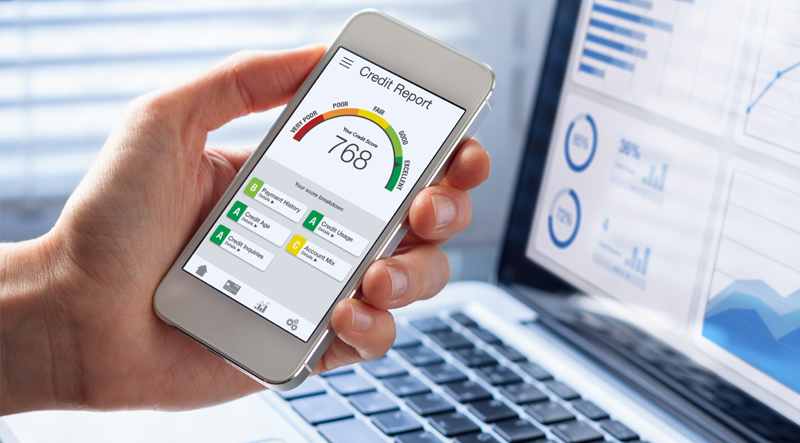
In the dynamic landscape of modern finance, the advent of automated credit scoring systems has catalyzed a transformative shift in the way financial institutions assess creditworthiness. Gone are the days of cumbersome manual processes and subjective evaluations; automated credit scoring has emerged as a powerful tool, leveraging advanced algorithms and vast data sets to streamline decision-making processes and enhance accuracy. This article explores the evolution, mechanics, benefits, and implications of automated credit scoring in shaping the future of lending and financial services.
Table of Contents
Evolution of Credit Scoring:
Historically, credit scoring relied heavily on manual assessment methods, where loan officers meticulously evaluated applicants based on limited information and subjective judgment. However, this approach was prone to biases, inconsistencies, and inefficiencies, often leading to suboptimal outcomes for both lenders and borrowers.
The advent of computing technology and the proliferation of data paved the way for automated credit scoring systems. Initially, these systems employed rudimentary algorithms to analyze credit-related data and generate risk scores. Over time, advancements in machine learning, artificial intelligence, and big data analytics revolutionized the capabilities of these systems, enabling them to process vast volumes of data with unprecedented speed and accuracy.
Mechanics of Automated Credit Scoring:
Automated credit scoring systems operate by analyzing various data points to assess the creditworthiness of individuals or businesses. These data points typically include:
- Credit History: Information on past borrowing behavior, such as repayment history, outstanding debts, and credit utilization.
- Demographic Data: Factors such as age, income, employment status, and residential stability.
- Financial Indicators: Assets, liabilities, savings, investments, and other financial metrics.
- Behavioral Data: Patterns of financial behavior, such as spending habits, transaction history, and online activity.
- External Factors: Economic conditions, industry trends, regulatory changes, and other external influences.
Using this diverse array of data, automated credit scoring systems employ sophisticated algorithms to generate credit scores or risk profiles for applicants. These scores quantify the likelihood of default or delinquency, enabling lenders to make informed decisions regarding loan approval, interest rates, and credit limits.
Benefits of Automated Credit Scoring:
The adoption of automated credit scoring systems offers a myriad of benefits for both financial institutions and consumers:
- Efficiency: Automated processes drastically reduce the time and resources required for credit assessment, enabling faster decision-making and improved operational efficiency.
- Accuracy: By leveraging advanced analytics and machine learning algorithms, automated systems can analyze vast amounts of data with greater precision, resulting in more accurate risk assessments.
- Consistency: Unlike manual evaluations, which may be influenced by subjective biases, automated systems apply consistent criteria and scoring models across all applicants, ensuring fairness and impartiality.
- Risk Management: Automated credit scoring enables lenders to better manage credit risk by identifying high-risk applicants and adjusting lending criteria accordingly.
- Expanded Access to Credit: By streamlining the lending process and reducing administrative barriers, automated credit scoring systems facilitate greater access to credit for underserved populations, fostering financial inclusion and economic empowerment.
Implications and Challenges:
While automated credit scoring holds immense potential, it also raises certain concerns and challenges that warrant careful consideration:
- Data Privacy and Security: The use of vast amounts of personal and financial data raises concerns regarding privacy, data security, and regulatory compliance.
- Algorithmic Bias: Automated scoring models may inadvertently perpetuate or amplify existing biases present in the underlying data, potentially leading to discrimination or unfair treatment of certain demographic groups.
- Transparency and Explainability: As automated systems rely on complex algorithms, there is a need for transparency and explainability to ensure that consumers understand how credit decisions are made and can address any discrepancies or inaccuracies.
- Model Robustness and Adaptability: Continuous monitoring and refinement of scoring models are essential to ensure their robustness and adaptability to evolving market conditions, regulatory requirements, and consumer behavior.
- Human Oversight: While automation enhances efficiency and scalability, human oversight remains crucial to validate model outputs, address exceptions, and mitigate the risk of algorithmic errors or malfunctions.
Conclusion:
In conclusion, automated credit scoring represents a paradigm shift in the field of financial decision-making, offering unprecedented efficiency, accuracy, and scalability. By harnessing the power of advanced analytics and machine learning, automated systems enable lenders to make data-driven credit decisions with greater speed and precision. However, realizing the full potential of automated credit scoring requires a balanced approach that addresses concerns related to privacy, fairness, transparency, and model robustness. As the financial landscape continues to evolve, automated credit scoring will play an increasingly vital role in shaping the future of lending and financial services, driving innovation, inclusion, and economic growth.
With its ability to process vast amounts of data with speed and precision, automated credit scoring is revolutionizing the lending industry, but it also raises questions about privacy, fairness, and transparency that need to be addressed.